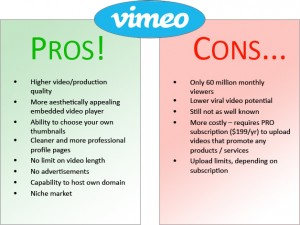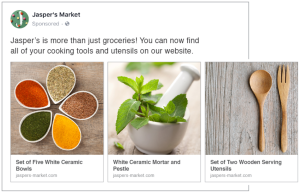We should all be very excited about Integration Platform as a Service.
Circa 2004, the marketing world was buzzing with a new trend: marketing automation. Robust new platforms burst onto the scene, opening up a world of possibilities for marketers to get more done in less time.
What was the promise of this new category? That marketing automation would take away all the tedious, repetitive marketing tasks that marketers hated, freeing them up to focus on more creative and strategic projects.
Fast forward 15 years and the result is…well, not really that.
Marketing ops is still bogged down
“Today’s marketing automation platforms only automate a portion of marketing activities,” says Justin Norris, martech expert and Senior Director Solutions Architecture at Perkuto, who has spent the last 15 years working on and studying marketing automation. “Marketers (and especially marketing ops) want to build great things, but they are bogged down with excel sheet imports and cleaning up data.”
I sat down with Justin and over a “virtual coffee” while he shared with me things he loathed about the marketing automation industry — and what gets him out of bed in the morning.
In almost every sector, Justin has seen first-hand how marketing automation failed to deliver on its promise. “Marketing automation tools were supposed to become our always on, faithful servants. Then we discovered truth: that it was actually the other way around,” he chuckled.
But there is something new in the market that is changing Justin’s tune. He said that this new breed of technology makes him feel just as empowered as when as when he discovered marketing automation.
So what is it? It’s a new layer placed on top of marketing automation called Integration Platform as a Service (IPaaS). Let’s explore further.
Finally out of spreadsheet hell?
Marketers and ops folks may pride themselves on being handy with excel, but everyone will agree that cleaning spreadsheets on a daily basis is a pain.
Why is this a thing? With today’s multi-level martech stacks, marketers often pull data from one system and load it into another. A common example that makes me cringe is downloading event attendees from a webinar platform, cleansing and formatting the data, and importing that data into an email or advertising management platform. This entire process must be repeated for every campaign. So much for marketing “automation”.
But there’s a new breed of platforms such as Workato, Mulesoft, Tray.io, Zapier and others that were created to address this challenge. These platforms fall into the category of IPaaS, and they can effortlessly and programmatically move data from one system to another without breaking a sweat. And that’s just the start. With the right coaching, some of these platforms can add leads to CRM with the correct assignment, alert reps in slack, update record data, use AI/ML to analyze customer information and categorize it, automate a range of business activities such as HR, invoicing, and more.
“For employee onboarding, we used to enter the same information into at least 10 – and up to 50 different applications. Now, its fully automated.” Says Jeff Sutton, IT manager for ChowNow, an online ordering system for restaurants.
IPaaS has also been referred to as workflow automation and enterprise automation, and many marketers have been singing its praises as the next generation of marketing technology. Some have even gone so far as calling it “marketing ops automation”.
True automation empowerment
Back to my conversation with Justin Norris – “I remember the first time I realized the power of marketing automation and what it could do. With a MAP synced with a CRM, I could automate customer touchpoints, normalize huge amounts of data, and hand leads off to the right salesperson – all in a programmatic way. I didn’t have to do anything. I felt like I was a builder, a creator, and I could use these tools to solve complex problems.”
As Justin’s experience grew, and as he started to tackle larger problems for more mature companies, that feeling of empowerment soon came to an end. The cause? Unfortunately, the entire business doesn’t run within those two systems. Martech is multitudinous, containing data warehouses, analytics tools, event platforms and much more. Marketing automation can’t touch these systems without a fair amount of development work. And so, the manual work of exporting and importing spreadsheets of data rears its ugly head.
But it turns out the feeling of empowerment for Justin would come back full force years later, when he started to work with IPaaS.
But to understand just what the feeling of empowerment is, we first need to look at what marketers love about traditional marketing automation in the first place.
The key component is called a “work flow”, which enables a marketer to perform an action when certain conditions are met. Think of an “if-then statement” followed by an action. I personally felt the power of this feature when I realized, with a single work flow, I could send emails, update any record in question, or even delete the entire database.
Justin discovered that IPaaS brought this idea of a work flow out of the marketing automation system and applied it across your entire tech stack.
“In Workato for example, these work flows are called ‘recipes,’” Justin explained, his voice was excited, as he was detailing a real passion. “These recipes let you to listen for an event in one system, and trigger an action in another system. Or even multiple systems. No programming required.”
Here’s an example to flesh out Justin’s statement. Let’s say a prospect fills out one of your marketing forms on your website – with IPaaS, you could do four separate actions almost simultaneously. First, you can create the lead in Salesforce. Second, you can assign it to correct salesperson. Third, you can add the lead to a sales cadence tool such as Salesloft for continual followup. And fourth you can alert the salesperson in Slack that a lead is ready for their review. All without needing a developer.
What does this mean for the industry?
I asked this question of Justin, and how he feels this will change the Martech landscape.
He told me: “I’ve been able to save clients a ton of time with IPaaS. I can pull email content from the blog into a MAP, and then personalize that email based on customer data. But it doesn’t really stop with just marketing. You could apply it to HR processes, recruitment processes, all different kinds of work flows.”
In hearing this, I’m truly astounded at the possibilities IPaaS can bring to the marketing ecosystem. The ability to save marketers time by skipping the spreadsheets is great, but the truly exciting part is empowering them to build solutions that were once impossible without engineering resources.
On the other hand, I can’t help but wonder how this feeling of empowerment is affecting other areas of business, and if this is how great IT organizations have always operated.
If I felt incredible excitement being able to automate repetitive, yet important parts of my work, why would this have to stop with just marketing?
Download Enterprise Marketing Work Management Platforms: A guide for marketers
The post Will the promise of true marketing automation finally be realized? appeared first on MarTech.
MarTech(45)
Report Post









